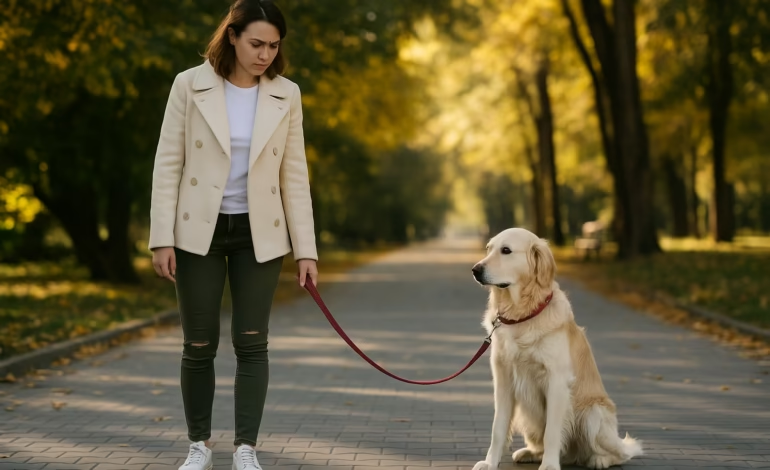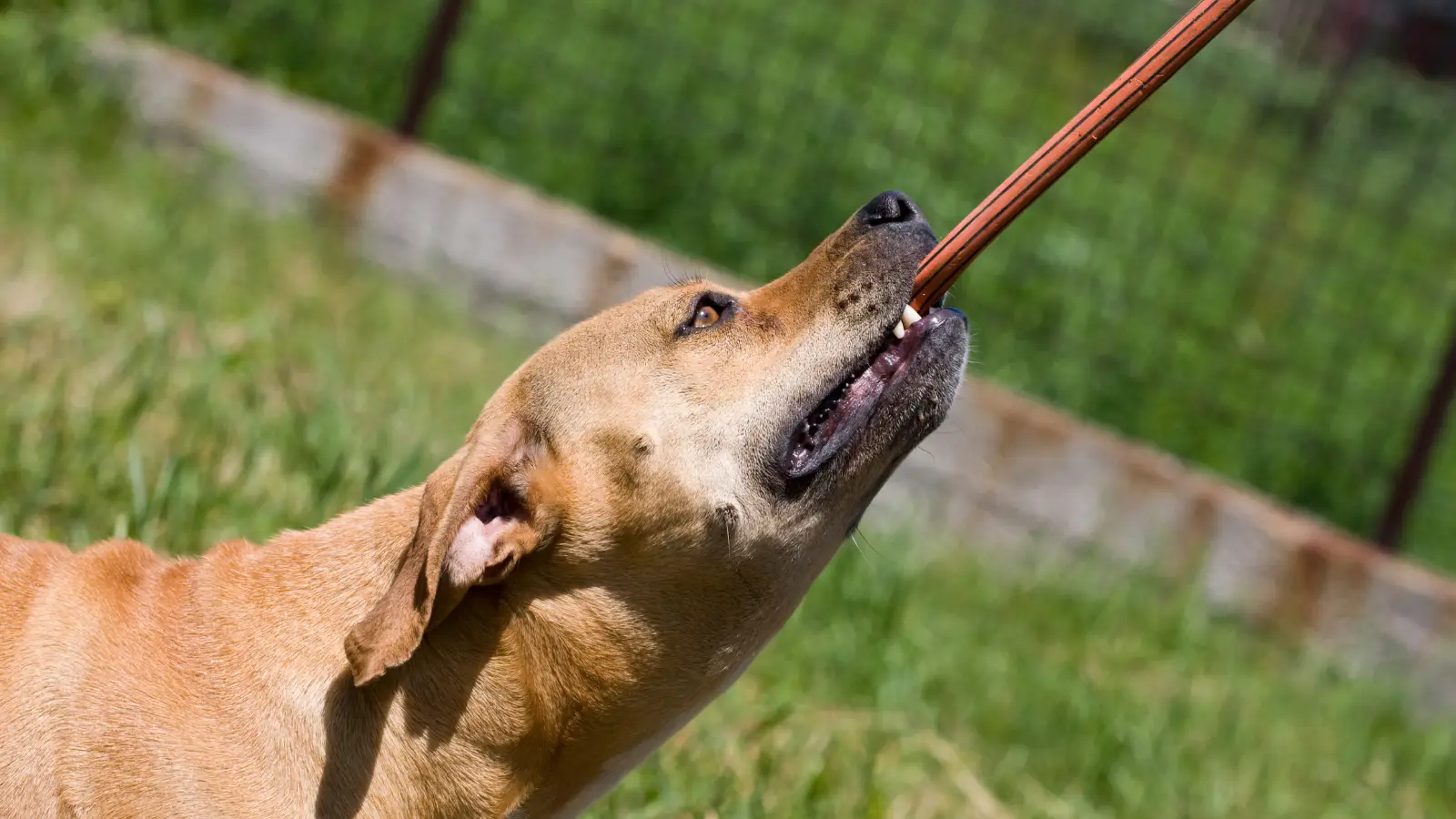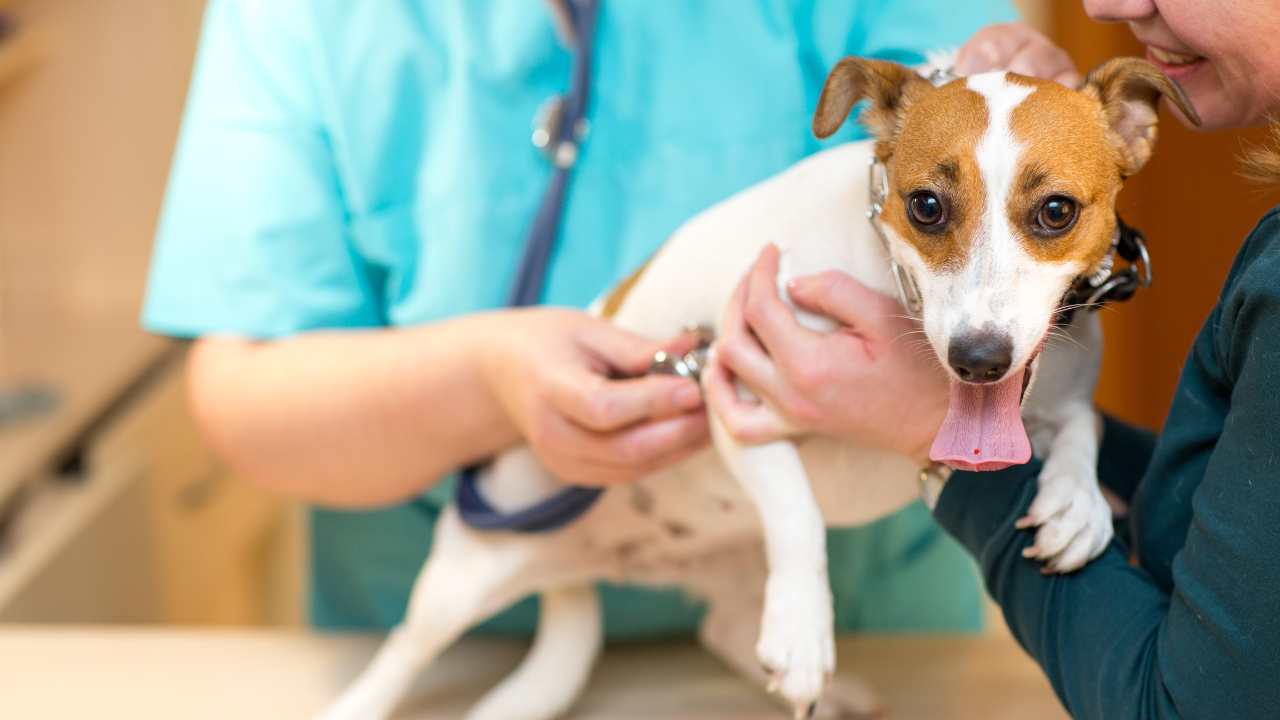
Why does my dog stop walking?
Why does my dog stop walking? It tries to tell you something, whether in pain, fear, tiredness, or even simple stubbornness. You’re not alone—many pet parents face this exact issue.
Now, we’ll walk you through the common causes behind this behavior, how to tell if it’s serious, and simple ways to help your dog enjoy walks again. Let’s figure out what your dog is trying to say to you so you can return to happy, stress-free walks.
Common Reasons Why does my dog stop walking
1. Physical Discomfort or Pain
Your dog may stop walking because they are in pain. This is one of the most common reasons. Dogs can’t tell us when something hurts, so they show it through their behavior. If your dog suddenly stops and doesn’t want to move, check their paws for cuts, thorns, or burns, especially on hot pavement.
Older dogs may also suffer from joint pain or arthritis, which makes walking difficult. If you notice limping, whining, or stiffness, it’s time to visit the vet. Don’t ignore these signs—they could be telling you that your dog is uncomfortable or in real pain.
2. Fear or Anxiety
Fear can cause your dog to freeze during a walk. Some dogs get scared of loud sounds, busy streets, strangers, or other dogs. If your dog suddenly stops, looks alert, or tries to pull back, fear may be the cause.
Rescue dogs or puppies who had a rough start in life often struggle with anxiety. Try to be patient and calm. Let them take their time. Choose quiet routes and reward them for walking even a few steps if possible. Over time, their confidence will grow.
3. Lack of Training or Stubbornness
Sometimes, dogs stop walking because they don’t know what to do or don’t want to. Young dogs and puppies might not be used to leashes yet. They may resist or sit down during walks if they weren’t trained to walk beside you.
Other times, dogs test boundaries. They know that stopping might get your attention or a treat. Consistent training with positive reinforcement can fix this. Practice walking in short, fun sessions and reward them for moving forward.
4. Tiredness or Fatigue
Your dog might just be too tired to keep going. This is common in puppies who don’t have a lot of stamina yet, or in older dogs who need to take it easy. Also, dogs can get overheated, especially in warm weather or after lots of playtime.
If your dog is panting, lying down, or strolling, it might need a break. Offer water and let the dog rest in the shade. To avoid overexertion, try shorter walks during cooler times of the day.
5. Distraction or Overstimulation
Dogs often stop walking because something grabs their attention. They may want to sniff a tree, watch a squirrel, or stare at another dog across the street. Some dogs are just curious and get easily distracted.
While this behavior isn’t bad, it can become frustrating if it happens too often. Train your dog to respond to gentle tugs or voice commands like “Let’s go!” Rewarding them when they listen will teach them to stay focused during walks.
Puppy-Specific Walking Issues
Puppies often stop walking because they’re still learning.
It’s normal for a puppy to sit, lie flat, or pull back during a walk. This new world is full of sounds, smells, and sights they’ve never experienced—it can be exciting, scary, or overwhelming.
If your puppy doesn’t move during a walk, it might be unsure of what’s happening or feel nervous. Puppies also tire out quickly because their little bodies are still growing. Long walks can be too much for them, both physically and mentally.
Start with short, gentle walks close to home. Let your puppy stop and explore at their own pace. Use soft praise, treats, and a calm voice to encourage movement. Never pull harshly on the leash—this can make them afraid of walking even more.
With time, patience, and training, your puppy will gain confidence and enjoy walking with you. Every step is progress, so celebrate the small wins!
Breed-Related Behavior Differences
Some dog breeds are more likely to stop walking than others.
Like people, every dog breed has its personality, energy level, and walking style. Some breeds are energetic and love long walks, while others are more laid-back or stubborn.
For example, bulldogs and pugs often struggle to breathe, especially in warm weather. They may stop walking because they feel tired or overheated. On the other hand, basset hounds and dachshunds might get easily distracted by smells and want to stop and sniff everything.
Then there are breeds like Huskies or Shiba Inus—known for their independent streak. If they don’t feel like walking, they might stop out of stubbornness. These dogs need extra motivation and consistent training.
Knowing your dog’s breed traits can help you better understand its walking behavior. It can also help you choose the right gear, walking route, and pace for your dog.
Health Warning Signs to Watch For
If your dog keeps stopping during walks, it could be a sign of a health issue.
While some reasons are harmless, like being tired or distracted, others might need medical attention. Dogs can’t tell us when something’s wrong, so they show it through changes in behavior, like stopping, slowing down, or acting differently on walks.
Look for warning signs such as:
- Limping or holding up a paw
- Heavy panting even in cool weather
- Whining or yelping when moving
- Refusing to walk at all
- Swelling in the legs or joints
- Lethargy or sudden change in energy
If your dog shows any of these symptoms, it’s best to call your vet. The problem could be anything from a sore paw to joint pain or even a hidden injury. Early care can prevent the issue from getting worse and help your dog get back to feeling their best.
Always trust your gut—if something feels off, it’s better to be safe and check it out.
How to Encourage Your Dog to Walk
If your dog refuses to walk, don’t worry—there are gentle ways to help it move again.
Whether your dog is scared, tired, or not in the mood, the right approach can make walks more enjoyable for both of you. Here are some simple tips that work:
1. Training Tips
Use positive reinforcement. Reward your dog with treats, praise, or their favorite toy when they take a few steps forward. This helps them understand that walking is a good thing.
Start slow and build up. If your dog is nervous, take short walks around the house or yard first. Stay calm and patient—never pull or force them to walk. Instead, encourage them with a cheerful tone and gentle movements.
2. Motivational Tricks
Make walks fun and rewarding. Please bring a few treats and give them when your dog follows your lead. Try using a favorite toy to grab their attention and get them excited.
Walk in quiet, familiar places at first. Loud noises and busy streets can overwhelm your dog. As they gain confidence, slowly introduce new areas.
3. Check Your Gear
Uncomfortable gear can make your dog stop walking. Check if the leash, collar, or harness is too tight, too loose, or rubbing against your dog’s skin. A well-fitted harness often gives your dog more comfort and control.
If needed, try different types of gear. Some dogs prefer harnesses over collars, especially if they’ve had a bad experience.
Most dogs can learn to enjoy their walks with time, love, and the right tools. Remember, it’s not about how far you go—it’s about helping your dog feel safe, happy, and connected to you.
When to Visit the Vet: Why does my dog stop walking
If your dog stops during walks and you’re unsure why, it’s time to talk to a vet.
As pet parents, we always hope it’s something small, like tiredness or mood. But if the behavior continues or gets worse, it could mean something more serious is going on.
Here are clear signs that you should visit the vet:
- Your dog suddenly refuses to walk, even in familiar places.
- They limp, whine, or show signs of pain
- You notice swelling, injury, or cuts on their paws or legs.
- They’re unusually tired or low on energy.
- Breathing seems heavy or labored
- They’ve had recent changes in appetite, sleep, or bathroom habits.
Even if there’s no visible injury, underlying problems like arthritis, joint pain, or even heart issues could be the cause. Your vet can examine your dog and rule out health concerns, giving you peace of mind and the proper steps.
Always trust your instincts. You know your dog best. Getting expert help is the most loving thing you can do if something doesn’t feel right.
My Final Tips for You: Why does my dog stop walking
If your dog stops walking, they’re trying to tell you something—listen with love and patience.
It can be confusing and stressful when your dog suddenly refuses to move. But in most cases, the reason is simple: they might be tired, scared, in pain, or unsure. By understanding what’s behind the behavior, you can respond correctly and rebuild trust and joy in your walks together.
Here are a few final tips to remember:
- Always check your dog’s body for signs of pain or injury.
- Use positive reinforcement to make walking fun again.
- Be patient, especially with puppies or anxious dogs
- Know your dog’s breed and personal comfort level.
- Never force or drag them—encourage gently
- When in doubt, talk to a vet for peace of mind
Every dog is different, but with time, love, and understanding, your furry friend will feel more confident and happy to walk by your side again.
Your dog isn’t being difficult—they’re asking for help.
And you’re already doing a great job by looking for answers.



